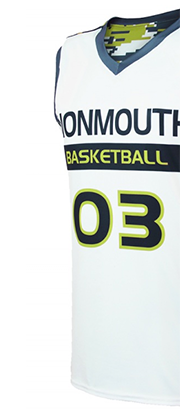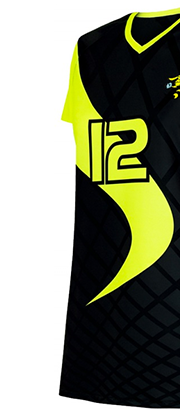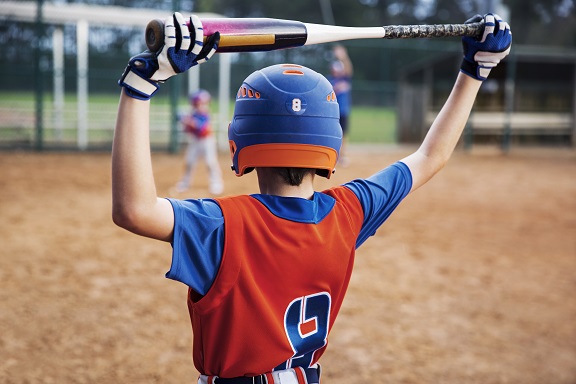Playing baseball is a beloved pastime among both kids and adults. Youth baseball in particular is an amazing opportunity to build physical fitness, develop teamwork skills, and gain physical prowess. But maximizing the impact of that experience lies in the player’s ability to hit the ball harder. Fortunately, there are a few key tips that any youth player can use to improve their game.
One of the most important factors for hitting the ball harder is learning proper mechanics and stance. A good batting posture will lead to stronger swings, resulting in more power behind your hits. This means learning to swing from your upper body without using too much arm strength or “swinging too hard”—something many young players try to do. The goal should be a smooth but powerful movement that begins at the hips and works its way through your core and upper body simultaneously.
Key Takeaways:
- Ensure young players have good fundamentals that will help them become better athletes.
- Incorporate mental exercises into practice sessions to help kids visualize and anticipate where the ball will be.
- Provide guidance and support from coaches, parents, and teammates to make sure young people are having a positive experience while learning important life lessons.
Breaking Down the Mechanics of a Good Hit
Having the proper mechanics and technique when hitting a baseball is essential for any athlete. The ability to hit the ball harder starts with getting the fundamentals of your swing right. While there are a few key elements of a good hit, taking some time to break down each step can make all the difference for an aspiring young player.
The first step to a good hit is having the right stance. A good batting posture will lead to stronger swings, resulting in more power behind your hits. When setting up, make sure that you stand with your feet shoulder-width apart and have equal weight on both legs—this will help keep you stable while you swing. In addition, be sure to point your bat toward the pitcher and keep your elbows close to your body; maintain good posture throughout your motion as this will also provide stability and help maximize impact.
The next step is swinging the bat correctly; too much arm strength or “swinging too hard” is something many young batters struggle with. The goal should instead be a smooth but powerful movement that begins at the hips and works its way through your core and upper body simultaneously. Make sure that when you find yourself swinging, try not to open up too early as it can prevent accuracy and reduce power—for optimal power, it’s best to stay closed until contact with the ball has been made before rotating through the rest of your approach.
Finally, don’t forget about follow-through after making contact with the ball! Keep in mind that how well you finish can determine how far or fast it goes—so maintain a loose grip on the bat and let it do its work as it naturally flows away from you without putting opposing pressure on it!
Hitting a baseball isn’t easy but by breaking down each element into parts, athletes can make great strides toward mastering their swing form in no time! Taking some time to practice these steps will soon pay dividends out on the field so don’t get discouraged if it’s taking time – eventually even novice players will master their swings and start hitting like pros!
Strengthening Your Swing
Major League Baseball is a perfect example of the power behind a good swing. But that level of excellence doesn’t happen overnight—it takes time, practice, and dedication to develop the strength and mechanics needed to hit the ball with force. Whether you are an experienced player or just starting, here are a few tips to help you strengthen your swing and put more power into your hits.
The first step is learning proper form. This means taking time to practice your stance and technique rather than relying on brute strength to hit the ball harder. A good batting posture will lead to stronger swings, resulting in more power behind your hits so remember to keep your weight evenly distributed on both feet and stand shoulder-width apart; make sure you maintain this posture when swinging as it will provide stability and help maximize impact during your motion.
Once you have established proper form, begin working on strengthening muscle groups that are essential for swinging with power. Working out can help build strength in arms, shoulders, chest, and back while activities like walking or jogging can increase endurance so you don’t tire out after only a couple of swings. Research has also shown that yoga may help increase core stability which leads to better rhythm during your batting motion.
In addition to the physical preparation for a strong swing, mental exercises such as visualization can also make all the difference when it comes to hitting success. Taking some time for drills as well as visualization can make it easier for players to anticipate how the ball moves once it’s released from the pitcher’s hand—and being able to visualize that trajectory makes it much simpler for athletes to know where they should be aiming their bat when they go up at bat!
Strengthening your swing isn’t easy but it is possible—with dedication, practice, and by following these steps any player can improve their game and start hitting like a pro!
Practice Makes Perfect –Tips to Improve Performance
The well-known adage ‘practice makes perfect is a reminder that nothing worthwhile comes without hard work and consistent effort. For athletes, this couldn’t be truer—whether you are an experienced player or just starting, regular practice is essential for improving performance and reaching the top of your game. Here are some tips to help you make the most of every practice session and start seeing results in no time.
The first step is establishing a routine. This means setting aside specific times throughout the week when you can commit to honing your skills and getting better at your chosen sport. Make sure it’s something you can stick with long term; if possible, find someone who can support and keep you accountable for following through with your practice sessions.
In addition to carving out dedicated time for practice, it’s also important to mix up what activities you focus on during each session. Take some time to do drills that focus on specific skills such as speed, agility, or hand-eye coordination while also incorporating drills that require you to use those skills in a more game-like scenario—this will help better prepare you for actual match-ups when it comes time to compete.
Finally, make sure that each practice session systematically works towards improvement by tracking your progress over time. Look closely at what aspects of your game need the most attention then create goals for yourself for each session so that it’s easier to identify both strengths and weaknesses; this will ensure that each session builds upon the last so that when it comes time for actual games or competitions, everything has been adequately reviewed and improved upon!
Practice truly does make perfect; by taking some time to establish routines, work on various aspects of your game and track progress along the way any athlete can see wildly positive results over time!
Identifying and Overcoming Obstacles to Hitting Harder
When it comes to baseball, one of the most important skills players need to master is hitting the ball hard. But that doesn’t mean it’s easy—it takes time, practice, and dedication to develop the strength and mechanics needed to hit with power. To help make the journey easier, here are a few tips for identifying and overcoming obstacles to hitting harder.
The first step is understanding your weaknesses or areas for improvement by analyzing form and approach. Poor posture or an incorrect swing could be preventing you from reaching your full potential, so be sure to look closely to identify any flaws in technique—this can be done both on the field during practice and through video, analysis to better understand what needs adjusting.
Once identified, start practicing drills at home, such as standing shoulder-width apart with weight evenly distributed on both feet or doing specific exercises to target arms, shoulders chest, and back muscles. Adding cardio activities like jogging or walking can also help increase endurance while exercises like yoga can improve core stability which will lead to better rhythm during your batting motion.
Finally, mental exercises are just as important as physical ones when it comes to hitting success! Visualization is key; take some time for visual drills that focus on anticipating how the ball moves once it’s released from the pitcher’s hand—this will give you a much better chance of knowing exactly where you should be aiming your bat when up at bat!
Identifying and overcoming obstacles may seem intimidating but with a bit of hard work, anyone can master their form and maximize their power with proper training!
Conclusion
Youth baseball is an enjoyable activity for kids of all ages. Whether they’re a beginner or starting to play in competitive leagues, they must receive proper training and advice to ensure they get the most out of their experience.
The most important thing is providing players with fundamentals that will help them become better athletes—through drills and practice, children can learn how to achieve greater speed, agility, and coordination. These skills are key for success on the field and not just when playing as part of a team; having good fundamentals will give youth players the confidence to approach any situation with poise and confidence with baseball uniforms.
In addition to honing physical abilities, it’s also important to incorporate mental exercises into practice sessions. Visualization techniques can help young players anticipate where the ball will be so they can respond quickly without overthinking things too much; it also teaches kids to focus their attention on the game itself rather than letting distractions get in the way.
At the end of the day, youth baseball should always be a fun experience. With proper guidance and support from coaches, parents and teammates alike can ensure that young people make the most out of their time playing this sport while learning important life lessons along the way!







